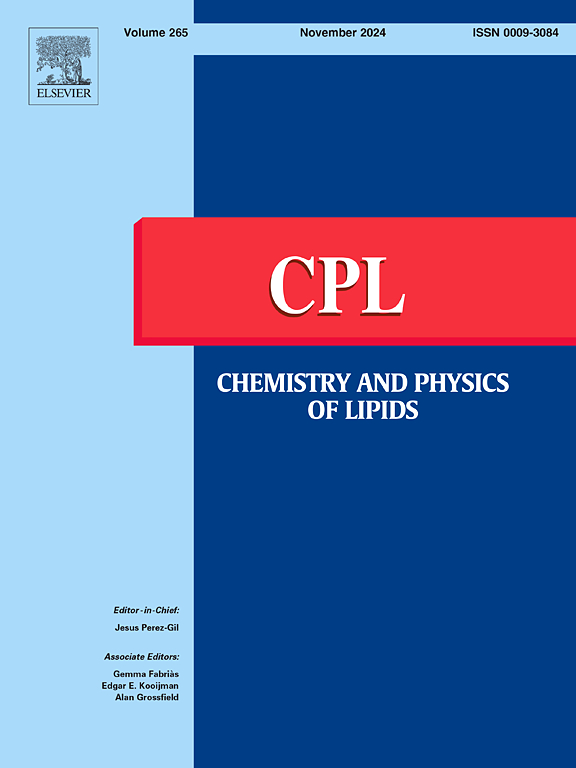成人氟牙症人群的基础广泛靶向脂质组学分析。
IF 2.8
3区 生物学
Q2 BIOCHEMISTRY & MOLECULAR BIOLOGY
引用次数: 0
摘要
氟斑牙是一种常见的慢性氟毒性口腔疾病,主要是由于长期过量摄入氟化物,严重影响患者牙齿美观和功能所致。近年来,随着代谢组学技术的迅速发展,脂质组学作为研究生物体内脂质代谢变化的重要手段,在揭示疾病发生机制方面显示出巨大的潜力。脂质作为细胞膜的主要成分和信号分子,代谢紊乱与多种疾病密切相关,但在氟斑牙中的具体作用机制尚不清楚。因此,本研究旨在通过广泛的靶向脂质组学技术,系统分析氟牙症患者与健康人群的脂质谱差异,为氟牙症的发病机制提供新的视角。为此,研究人员将健康参与者的唾液脂质组与氟斑牙患者的唾液微脂质组进行了比较。采集唾液样本,采用先进的基础广泛的靶向脂质组学技术,结合高效液相色谱-质谱(LC-MS)系统,对样本中的脂质进行全面检测和定量。对脂质数据进行生物信息学处理和分析,以确定氟牙症患者脂质谱变化的独特模式,并使用统计学方法验证这些变化的意义。几种甘油磷脂、脂肪酰基和鞘脂在牙齿中表现出明显的变化,其中,糖胆酸、LPA(18:4)、牛磺酸-3-硫酸石胆酸、硫酸石胆酸-3-硫酸石胆酸和牛磺酸-3-硫酸去氧胆酸在氟斑牙患者和健康对照组中被观察到。taurochenodeoxycholic acid显著降低,PA(12:0 ~ 12:0)水平显著升高。这些发现表明脂质代谢紊乱在氟斑牙的发生中起着至关重要的作用。本文章由计算机程序翻译,如有差异,请以英文原文为准。
Broad-based targeted lipidomic analysis of dental fluorosis population in an adult population
Dental fluorosis, as a common chronic fluoride toxicity oral disease, is mainly caused by long-term excessive intake of fluoride, which seriously affects the aesthetics and function of patients' teeth. In recent years, with the rapid development of metabolomics technology, lipidomics, as an important means to study the changes in lipid metabolism in organisms, has shown great potential in revealing the mechanisms of disease development. As a major component of cell membranes and a signaling molecule, metabolic disorders of lipids are closely related to a variety of diseases, but the specific mechanism of action in dental fluorosis is still unclear. Therefore, the present study aimed to systematically analyze the differences in lipid profiles between dental fluorosis patients and healthy populations by using broad-based targeted lipidomics technology to provide new perspectives on the pathogenesis of dental fluorosis. To this end, the researchers compared the salivary lipidome of healthy participants with the salivary micro lipidome of dental fluorosis patients. Their saliva samples were collected, and advanced broad-based targeted lipidomics technology, combined with a high-performance liquid chromatography-mass spectrometry (LC-MS) system, was used to comprehensively detect and quantify the lipids in the samples. The lipid data were processed and analyzed by bioinformatics to identify the unique patterns of changes in the lipid profiles of dental fluorosis patients and to verify the significance of these changes using statistical methods. Several glycerophospholipids, fatty acyls, and sphingolipids exhibited marked alterations in dental Among these, glycocholic acid, LPA (18:4), taurolithocholic acid-3-sulfate, lithocholic acid-3-sulfate, and taurochenodeoxycholic acid-3-sulfate were observed between dental fluorosis patients and healthy controls. taurochenodeoxycholic acid was significantly decreased, while PA (12:0_12:0) levels were significantly elevated. These findings suggest that These findings suggest that disturbances in lipid metabolism play a crucial role in developing dental fluorosis.
求助全文
通过发布文献求助,成功后即可免费获取论文全文。
去求助
来源期刊

Chemistry and Physics of Lipids
生物-生化与分子生物学
CiteScore
7.60
自引率
2.90%
发文量
50
审稿时长
40 days
期刊介绍:
Chemistry and Physics of Lipids publishes research papers and review articles on chemical and physical aspects of lipids with primary emphasis on the relationship of these properties to biological functions and to biomedical applications.
Accordingly, the journal covers: advances in synthetic and analytical lipid methodology; mass-spectrometry of lipids; chemical and physical characterisation of isolated structures; thermodynamics, phase behaviour, topology and dynamics of lipid assemblies; physicochemical studies into lipid-lipid and lipid-protein interactions in lipoproteins and in natural and model membranes; movement of lipids within, across and between membranes; intracellular lipid transfer; structure-function relationships and the nature of lipid-derived second messengers; chemical, physical and functional alterations of lipids induced by free radicals; enzymatic and non-enzymatic mechanisms of lipid peroxidation in cells, tissues, biofluids; oxidative lipidomics; and the role of lipids in the regulation of membrane-dependent biological processes.
 求助内容:
求助内容: 应助结果提醒方式:
应助结果提醒方式:


